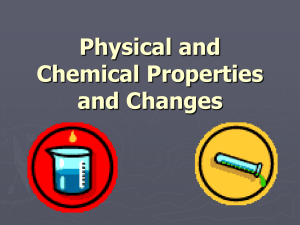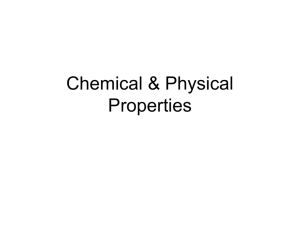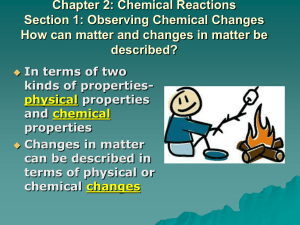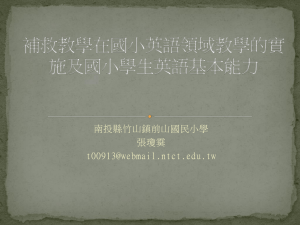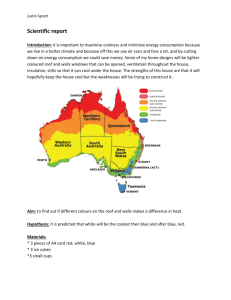Physical and Chemical Changes
advertisement
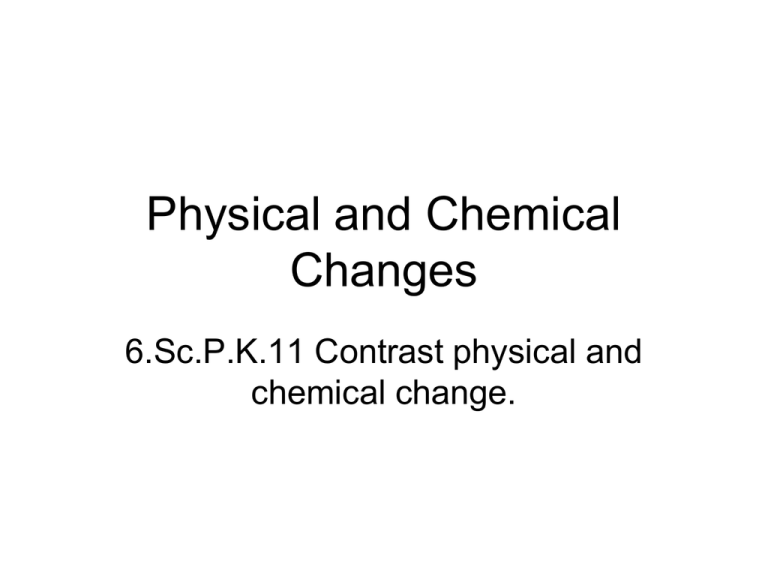
Physical and Chemical Changes 6.Sc.P.K.11 Contrast physical and chemical change. From Properties to Changes Physical and chemical properties are characteristics of matter. Physical and chemical changes are events that make the matter different somehow. Physical Change A change that occurs when one or more physical properties are changed. Many physical changes can be undone by physical means. Physical Change Fold a piece of paper (event). Does the paper still have its original physical properties or has a new substance been produced? It is still made of the same original substance. No new substance has been produced. Physical Change To make nacho cheese dip, you have to melt the cheese (event). Does the cheese still have its original physical properties or has a new substance been produced? Even though the cheese turned from a solid to a thick liquid, it is still made of the same original substance. No new substance has been created. Chemical Change A change that produces new substances. Most chemical changes cannot easily be undone. Chemical Change Holding a match to a piece of paper will cause the paper to burn (event). Does the paper still have its original physical properties or has a new substance been produced? Ash, gas, and smoke are new substances that have been produced (all of which have a different composition than the original paper). Chemical Change A metal mailbox is made of iron is exposed to oxygen (water contains oxygen). Does the mailbox still have its original physical properties or has a new substance been produced? Rust, a new substance, has been produced (ferric oxide Fe2O3). Chemical Change Food you eat goes through digestion (event). Does the food still have its original physical properties or has a new substance been produced? Food is broken down in the digestive system and nutrients, substances that have a different composition than the original food you ate, are sent to different parts of your body to provide energy. Change is Change! Predict what type of change is occurring with the following: Prediction Physical Chemical burning fuel burning wood cutting paper developing film melting candle wax melting ice sharpening a pencil mixing vinegar and baking soda burning fuelGas is ‘burned’ in a car’s engine through a process called internal combustion. When gas is placed in an enclosed space and ignited, an incredible amount of energy is released in the form of expanding gas, which is composed of a different substance than the original gas. Chemical Reaction Photo courtesy DaimlerChrysler Jeep® Grand Cherokee Engine burning woodWhen wood is burned, you are left with ash, gas, and smoke, all of which are new substances composed of different material than the original wood. chemical change cutting paper After cutting paper, you are left with smaller pieces of paper. Are those pieces of paper composed of the same material as the original paper? YES! No new substances are produced. physical change developing film A developing chemical agent is combined with the film that a camera used to store images on. The images are exposed in a format that allows them to be seen though new particles. A new substance is created. chemical change burning candle Heat is used to melt candle wax and the heat must be maintained in order for the wax to stay melted. Is the wax still composed of the same substance when it is in liquid form? Yes, even though the wax is melted, it is still the same substance. The wick burns, creating a new substance; this is a chemical change. both physical change and chemical change melting ice If ice is not kept at a constant freezing temperature, it will melt (event). Is the melted ice still composed of the same substance when it is in liquid form? Yes, even though the ice is melted, it is still the same substance. physical change sharpening a pencil A wood and graphite pencil is sharpened by a pencil sharpener. Are the pencil shavings still composed of the same substance or is a new substance produced? Yes, pencil shavings are just little pieces of the original pencil. physical change vinegar and baking soda When baking soda and vinegar are combined (event) a bubbly, fizzy substance appears. Is this still the same substance or has a has a new substance produced? Yes, when the two chemicals combine C02, a gas, is produced. chemical change

